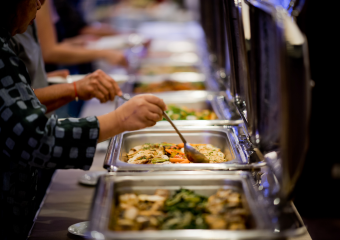Food delivery market to grow 18% to Rs 2 trn by 2030: Bain-Swiggy report – Business Standard

The online food delivery market is expected to grow at an 18 per cent compound annual growth rate (CAGR) to reach Rs 2.12 lakh crore, contributing 20 per cent to the overall food services market by 2030, according to a recent report.
Online food delivery has steadily increased over the years, with penetration rising from 8 per cent to 12 per cent between 2019 and 2023, representing a 2.8 times growth.
This growth is ahead of the larger food services market in India, which encompasses dining out and ordering in. The food services market is currently valued at Rs 5.5 lakh crore and is poised to grow at 10–12 per cent annually over the next seven years, reaching Rs 9 lakh–10 lakh crore by 2030, according to the ‘How India Eats’ study by Bain & Company and Swiggy.
The growth trajectory will be driven by robust fundamentals, including an expanding customer base, growing consumption occasions, and a rise in supply, the report said.
“The Indian food services market, especially food delivery, has witnessed buoyant growth over the last few years. Higher incomes, digitisation, improved customer experience, and an inclination to try new experiences have all contributed to this growth,” said Rohit Kapoor, chief executive officer, Food Marketplace, Swiggy.

China has four times the number of restaurants per million urban population, as compared to India. This study highlights this headroom and suggests that the Indian food service market catering to middle- and higher-income segments will expand from Rs 4–5 lakh crore at present to about Rs 10 lakh crore by 2030,” he added.
More From This Section
According to Kapoor, the biggest driver for improving food delivery margins will be restaurant density.
“What affects the cost the most is how long the distance to deliver is. In China, because the density of restaurants is much higher, the delivery radius is very low. As this density goes up, it will bring down delivery costs,” he said.

The study indicates faster growth in convenience-led formats—quick service restaurants (QSRs) and cloud kitchens with propositions such as quick service, simplified menu, value for money, etc.—are expected to grow 40 per cent faster than the overall market from 2023 to 2030.
“By 2030, the market is poised to serve an additional 110 million customers, gradually shifting eating out from a special event into a convenient lifestyle,” said Navneet Chahal, partner, Bain & Company, and co-author of the report.
The addressable customer base for the Indian food services market is expected to grow from the current 320–340 million to approximately 430–450 million by 2030, supported by macroeconomic tailwinds including rapid urbanisation and a rise in affluence.

According to the study, approximately 70 per cent of food services consumption, as of 2023, is concentrated in the top 50 cities and among upper-middle and high-income segments, which are expected to remain demand hotspots in the medium term. However, incremental growth is expected to come from other tier-II and beyond cities as well.

Notably, Gen-Z and younger cohorts comprise 40 per cent of consumption but have a higher propensity to eat out, a trend expected to grow further as their purchasing power increases.
The report added that each customer, on average, orders more than three cuisines from over six restaurants on an online platform in a year, suggesting that Indian consumers seek variety in their dining experiences across different occasions.
Eating out, the report said, is a special event for Indian consumers, with an average of 5 times per month, which is expected to increase to 7–8 times by 2030. This mirrors developed markets like the US and China, where eating out is convenience-led and the monthly eating-out frequency is 25–30.
First Published: Jul 03 2024 | 7:25 PM IST





